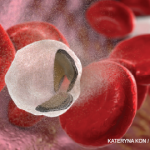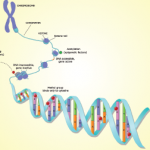In a bit of a nod to La-marck, some evidence supports the concept of transgenerational epigenetic inheritance. One study in mice observed that an environmental stress that resulted in aggressive behavior in males caused the same behavior in their offspring.6 The offspring were found to have changes in the DNA methylation pattern of particular genes. A recent study found that, compared to the offspring of normal-weight fathers, children of obese fathers have different epigenetic markings on the gene for insulin-type growth factor 2 (IGF2), an important regulator during fetal growth and development.7 Similar concepts may apply to our patients. For example, in smokers with rheumatoid arthritis (RA), the tobacco smoke can convert arginine into citrulline and thus stimulate the production of autoantibodies targeting citrullinated proteins such as CCP.8 There is accumulating evidence that, in susceptible individuals, excessive exposure to certain environmental pollutants may increase their risk for developing RA. Another example may be the drug hydralazine. This well-known culprit responsible for causing drug-induced lupus syndromes has been shown to reduce DNA methylation levels in vitro. Could this be its modus operandi?
Another one of my “ad blitz” patients was a 29-year-old medical intern, Faye, who wanted to confirm her diagnosis of RA. After hearing a lecture on RA during medical school, she wondered whether this condition could explain her morning stiffness, fatigue, and some of her recurrent joint aches. Despite these symptoms, she never observed any swollen joints, and a series of sequential ultrasound studies of both hands have been normal. For the past three years, despite having an array of abnormal lab results that would be consistent with RA (positive rheumatoid factor and CCP antibody, elevated c-reactive protein, and erythrocyte sedimentation rate), she continues to demonstrate an entirely normal joint exam.
Nonetheless, her treating rheumatologist felt strongly that she was destined to develop full-blown RA, and recommended that Faye begin treatment with an anti–tumor necrosis factor inhibitor. The option of using methotrexate was bypassed because of Faye’s wish to conceive sometime in the next year.
Her case is unusual; after all, given the results of her lab tests, it would seem likely that Faye would have developed full-blown clinical RA by now. Why hasn’t she? Can some form of epigenetic modification be at work here? (Turn to p. 1 to read more about epigenetics in RA in “RA’s Smoking Guns.”)
A recent, intriguing study from Johns Hopkins University implicated DNA methylation as a potentially important intermediary of the genetic risk in RA.9



